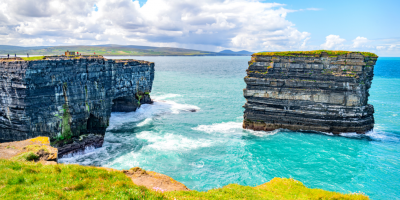
|
A sea stack is a vertical column of rock near a coast. This column is the remains of limestone cliffs that have been battered by the sea from both sides. At first, the waves carve out deep caves in the cliffs, which then gradually collapse, leaving behind the steep stack of rocks. |
By definition, a sea stack is a naturally occurring pillar made up of stacked rocks, that projects up towards the sky. It is usually found surrounded by water, especially during high tide, isolated and separate from the mainland mass at a small distance away. During low tide, the water recedes far enough so that some sea stacks become accessible via the beach.
Standing at the foot of a sea stack, looking up at that magnificent, yet oddly placed rock formation, one is likely to wonder how exactly did it get there? While the possibility of a divine hand at work might seem alluring, the truth is actually a little more interesting. These grand structures of rocks are actually created by the erosive powers of waves and winds.
Sea stacks are formed from headlands. A headland is a coastal land-form that is quite high, and has a sheer drop that extends out into the sea or ocean. Parts of the headland that jut out into the water slowly get eroded over time by the mechanical energy of winds and waves. Essentially, the softer and weaker part of the rocks get eroded and break away, leaving behind the harder and stronger rock.
The formation process usually begins when water starts smashing against the portion of the headland rock that is jutting out, causing it to slowly erode. Coastal winds too assist in this process. Both, waves and winds chisel away at the rocks continuously for many years, until finally, a cave is formed.
Credit: Science Struck
Picture Credit : Google




